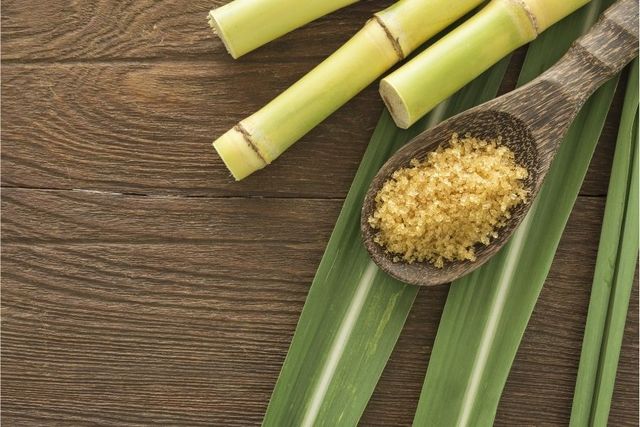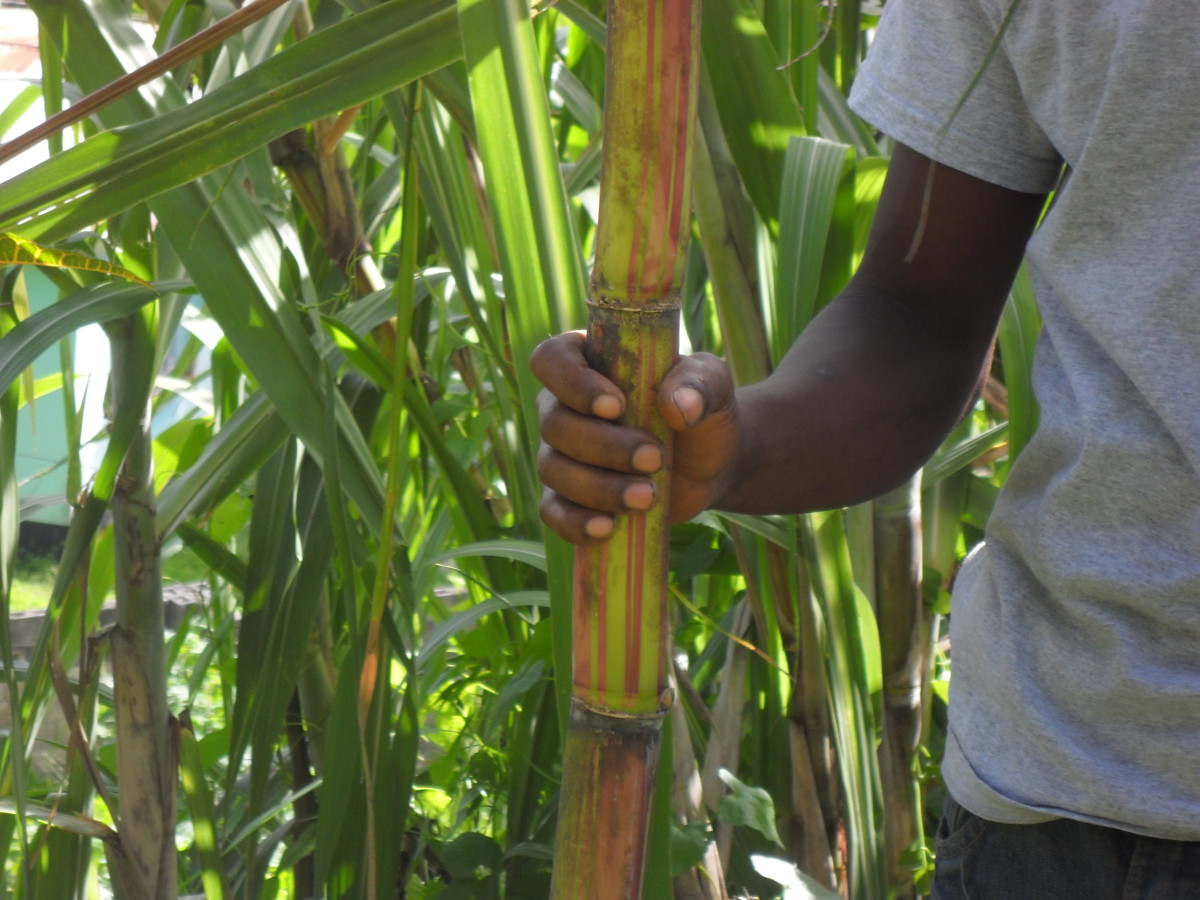From Farms to Factories: What Are Sugar Canes Used For in Today’s Economy
Discover the Numerous Uses Sugar Canes: What Are Sugar Canes Made Use Of For in Everyday Life?
Sugar walking sticks are commonly overlooked regardless of their substantial contributions to day-to-day live. Mostly known for their duty in sugar manufacturing, they expand their energy to numerous cooking applications and sustainable practices. From sweetening foods to serving as environment-friendly products, sugar walking sticks offer a variety of benefits. Their potential goes even better. What other surprising uses do they keep in contemporary culture?
The Sugary Food Side: Sugar Production and Its Importance
Sugar walking cane functions as a necessary resource for sugar manufacturing, contributing considerably to worldwide food supply and economies. This exotic lawn, largely grown in regions with warm climates, produces a high concentration of sucrose, which is drawn out and refined right into numerous sugar items. The sugar produced from walking stick is not just a standard sweetener in plenty of homes but likewise plays a vital duty in the food industry, improving tastes and maintaining foods. What Are Sugar Canes Used For.Moreover, sugar cane farming sustains numerous employees and farmers, giving incomes and stimulating economic development in several developing nations. The sector fosters profession, producing considerable export profits for nations that create it in abundance. Additionally, the by-products of sugar walking stick handling, such as molasses and bagasse, are used in different sectors, even more intensifying its economic relevance. Overall, sugar walking cane continues to be a critical agricultural commodity with far-ranging implications for food safety and security and financial growth
Beyond Sugar: Culinary Use Sugar Canes

While the manufacturing of sugar from sugar walking cane is commonly recognized, its cooking applications prolong much past a mere sugar. Cooks and home chefs alike have found the versatility of sugar walking cane in various meals. The stalks can be juiced to create a revitalizing syrup, which improves dressings and marinates, including depth to savory meals. Additionally, sugar cane juice serves as a natural sugar in desserts, supplying an unique taste profile that varies from refined sugar.The coarse pulp remaining from juicing can be utilized in baking, conveying moisture and a subtle sweet taste to pastries and breads. In some cultures, sugar walking stick is smoked or roasted, causing a caramelized treat appreciated as a treat. Sugar walking cane can be incorporated into tasty dishes, where its natural sweetness balances flavors and improves the overall flavor. This multifaceted component continues to motivate cooking imagination throughout numerous foods.
Sugar Canes in the Beverage Sector
Sugar walking sticks play a substantial role in the drink market, acting as an all-natural sweetener in different drinks. Additionally, they are important in the production of rum, adding to the distinctive tastes of this prominent spirit. As customers look for much healthier alternatives, sugar walking sticks provide choices that balance sweetness with nutritional advantages.
All-natural Sweeteners in Drinks
Natural sweeteners stemmed from sugar walking sticks have actually come to be indispensable to the drink sector, improving flavor accounts and providing a much more genuine preference experience. These sweeteners, such as walking cane sugar, molasses, and syrups, are generally utilized in various drinks, from juices and sodas to teas and cocktails. Unlike sweetening agents, cane-derived choices supply a natural sweet taste that consumers frequently like. In addition, they add to the total mouthfeel and balance of flavors in beverages. The adaptability of sugar cane sweeteners enables for ingenious mixes, accommodating diverse palates and dietary preferences. As the need for all-natural active ingredients continues to climb, sugar walking cane sweeteners are positioned to play a considerable function in the development of the beverage landscape.
Rum Manufacturing Process
The manufacturing of rum showcases the flexibility of sugar canes past their duty as a sugar in beverages. Initially, sugar walking canes are harvested and squashed to extract their juice, which consists of high degrees of sugar. This juice is then fermented utilizing yeast, which transforms the sugars right into alcohol. The fermentation procedure can take several days, depending upon the preferred flavor profile. After fermentation, the resulting fluid, referred to as "clean," is distilled to enhance the alcohol web content and improve the flavor. The purification procedure can differ, with some producers choosing for pot stills while others make use of continual column stills. Ultimately, the rum undergoes aging in barrels, which boosts its flavor and color before bottling, ready for usage.
Healthier Beverage Alternatives
While lots of consumers look for healthier choices in their beverage choices, sugar walking stick works as a compelling base for a range of healthy options. Sugar cane juice, abundant in minerals and vitamins, is a prominent option in exotic regions, using a rejuvenating, all-natural sweetness without the ingredients discovered in several processed beverages. In addition, sugar cane removes are progressively being used in the formula of herbal teas and health and wellness tonics, supplying a natural source of energy with lower glycemic impact compared to fine-tuned sugars. Cutting-edge drinks integrating sugar walking cane with fruits and flavors cater to health-conscious consumers looking for tasty yet nourishing alternatives. These alternatives not only support a healthier way of life yet likewise add to the lasting use sugar walking cane as a versatile component in the drink industry.
Sustainable Practices: Sugar Canes and Eco-Friendly Solutions
As international understanding of environmental problems expands, sustainable practices in farming have become significantly essential, particularly in the farming of sugar cane. Farmers are taking on approaches such as crop turning, which aids enhance dirt health and minimize insect populaces. In addition, incorporated pest monitoring techniques minimize using damaging pesticides, advertising a much healthier ecosystem.Water preservation methods, including drip irrigation and rain harvesting, are also being utilized to optimize water usage in sugar cane farming. These methods not only boost sustainability but likewise boost crop return and quality.Furthermore, making use of natural plant foods acquired from sugar walking cane byproducts adds to soil fertility without the damaging results connected with synthetic fertilizers. Therefore, the cultivation of sugar cane can straighten with eco-friendly remedies, supplying a course towards even more lasting farming practices that benefit both the environment and neighborhood areas.

Biofuels and Power: The Role of Sugar Canes
Sugar walking canes offer an important function in the production of biofuels, especially ethanol, which is progressively acknowledged as a renewable resource resource. This exotic crop is rich in sugars, making it a perfect prospect for fermentation processes that transform these sugars right into alcohol. The ethanol created from sugar walking sticks can be mixed with gas, reducing dependence on nonrenewable fuel sources and reducing greenhouse gas emissions.Countries view it such as Brazil have actually effectively integrated sugar walking cane ethanol into their power systems, bring about significant decreases in carbon impacts. Furthermore, the farming of sugar walking canes for biofuel adds to rural advancement by providing jobs and promoting local economies.As the need for sustainable energy solutions grows, sugar walking canes are becoming a viable option to standard fossil gas. Their ability to generate cleaner power straightens with global initiatives to battle environment change and advertise ecological sustainability.
Cutting-edge Applications: From Product Packaging to Pharmaceuticals
The flexibility of sugar walking sticks extends far past biofuels, locating cutting-edge applications in different markets such as product packaging and drugs. In the product packaging market, eco-friendly materials originated from sugar walking stick provide an environment-friendly option to conventional plastics. These products not just lower ecological effect yet also offer reliable defense for products.In the pharmaceutical market, sugar walking cane by-products are utilized in drug formulas and as excipients, enhancing the efficacy and stability of medications. Their natural beginnings appeal to the growing need for non-toxic and sustainable parts in healthcare products.Furthermore, sugar walking stick essences are being checked out for their possible health and wellness benefits, consisting of antioxidant and anti-inflammatory properties. This expansion right into diverse fields demonstrates the adaptability of sugar walking sticks, positioning them as an important resource in attending to modern obstacles across several sectors, from sustainability to wellness treatment.
Frequently Asked Inquiries
Just How Do Sugar Canes Affect Citizen Economies?

What Nutritional Perks Do Sugar Canes Deal?

Can Sugar Canes Be Grown in All Climates?
Sugar walking canes prosper in subtropical and tropical climates, calling for cozy temperature levels and sufficient rainfall. They struggle in chillier regions, making their farming restricted to certain geographical locations where environmental problems agree with for growth.
Are There Any Type Of Wellness Threats Connected With Sugar Walking Stick Consumption?
Issues relating to sugar cane consumption include potential weight gain, enhanced blood glucose degrees, and dental issues (What Are Sugar Canes Used For). Small amounts is crucial, as too much intake may lead to wellness complications, necessitating recognition of private dietary needs and problems
How Are Sugar Canes Harvested and Processed?
Sugar canes are collected using manual or mechanical approaches, see page cut at the base, and after that carried to mills. There, they undergo crushing, juicing, and boiling to extract sugar and produce various by-products for diverse applications. The sugar created from cane is not just an essential sugar web in countless houses however additionally plays a vital duty in the food sector, enhancing tastes and preserving foods.Moreover, sugar cane growing supports millions of employees and farmers, providing incomes and boosting economic development in numerous establishing countries. Additionally, sugar cane essences are progressively being utilized in the formula of natural teas and health and wellness restoratives, offering an all-natural resource of energy with reduced glycemic effect compared to fine-tuned sugars. The ethanol created from sugar walking sticks can be combined with fuel, decreasing dependence on fossil gas and reducing greenhouse gas emissions.Countries such as Brazil have actually successfully incorporated sugar walking cane ethanol into their power systems, leading to substantial reductions in carbon impacts. Furthermore, the cultivation of sugar walking sticks for biofuel contributes to rural advancement by providing tasks and boosting regional economies.As the need for lasting energy services expands, sugar canes are arising as a sensible alternative to conventional fossil fuels. Worries concerning sugar walking stick consumption include potential weight gain, raised blood sugar levels, and dental concerns.